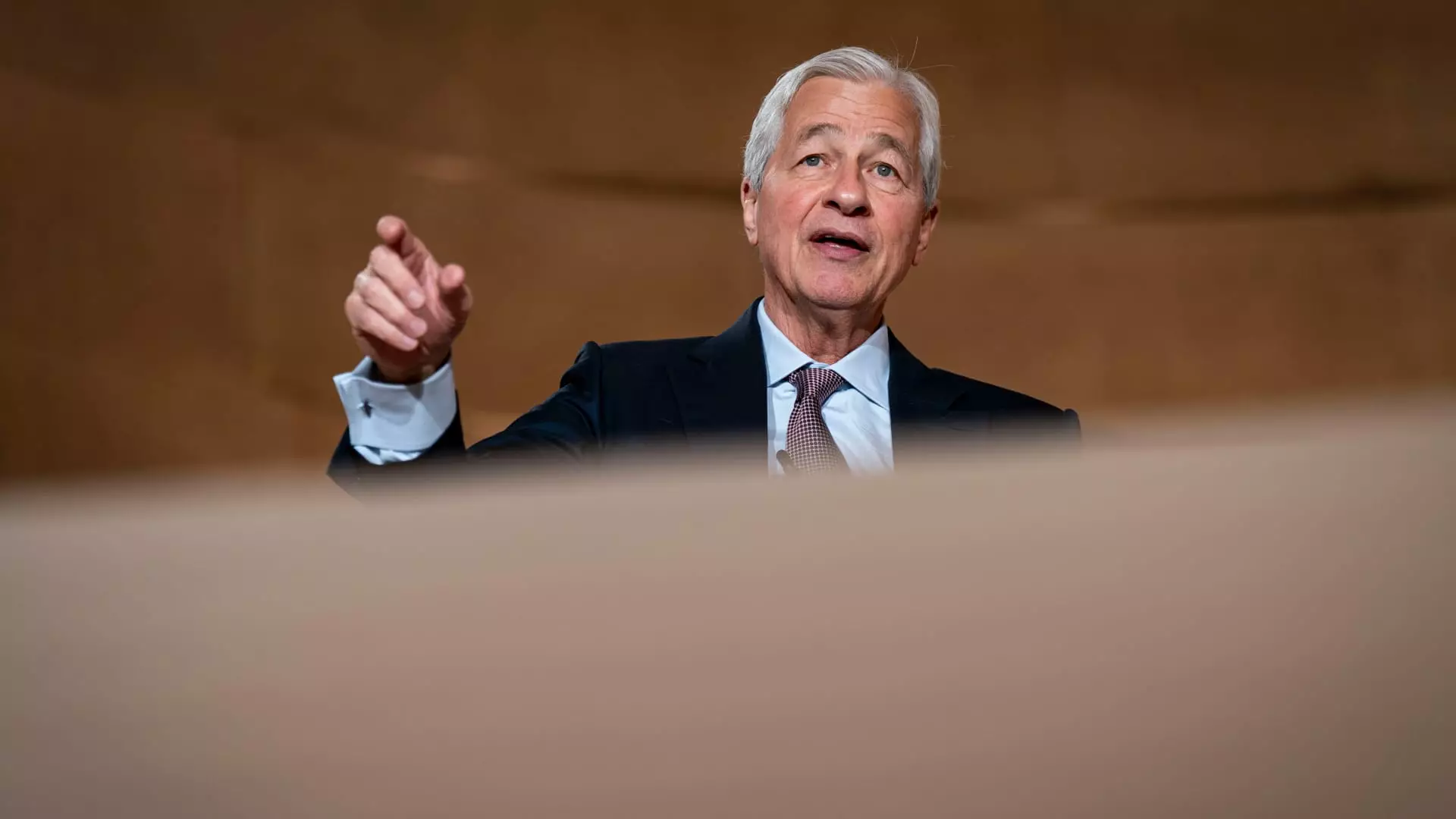In an era where financial landscapes give the appearance of bountiful stability, we find ourselves deluded by the ebb and flow of stock markets and seemingly robust corporate earnings. Jamie Dimon, the seasoned CEO of JPMorgan Chase, has sounded an alarm that resonates far beyond the confines of Wall Street. With concerns about record U.S. deficits, international tariffs, and geopolitical tensions rising, Dimon argues that both policymakers and investors are dangerously misjudging the risks at hand. The narrative has been one of recovery – stocks rebounding from lows, economic growth forecasts remaining bullish – yet the shadows of inflation and potential stagflation loom ominously. Dimon’s perspective forces us to critically examine this prevailing market optimism, essentially shaking the foundations of our collective complacency.
Turning a Blind Eye to Real Challenges
At a recent investor day event, Dimon candidly described his belief that central banks, often lauded as the guardians of economic stability, are becoming increasingly detached from reality. He pointed out that markets are underestimating the weight of substantial deficits and the limits of monetary policy. “You all think they can manage all this. I don’t think they can,” Dimon bluntly stated, a sentiment that resonates deeply amid the pressures of rising interest rates and unwieldy debt levels. The reduction in taxes and increased federal spending are creating a precarious fiscal environment. It begs the question: How long can this cycle of overspending and temporary fixes continue before reality strikes back?
The Perilous Path of Corporate Earnings
As corporate earnings projections take a hit amid the uncertainty born from trade conflicts and escalating tariffs, Dimon’s predictions regarding the S&P 500 seem grim. The supposed bubble of swift market recovery appears destined to burst as economic signals point toward stagnation, as outlined in Dimon’s assertion that earnings growth could slip to zero percent in mere months. This has serious implications, not just for the market’s perception of value but for the confidence that corporations instill in their investments. If firms retreat into self-preservation, looking to hold off on acquisitions and expansion, the ramifications for both employment and innovation could be dire.
Dimon’s analysis cuts to the core of a lingering tension within the business sector: the risk of stagnation exacerbated by inflation, a phenomenon Dimon says carries a far greater probability than the market acknowledges. The specter of stagflation—a scenario wherein economic growth stalls while prices soar— could leave both consumers and corporations grappling for stability.
A Call to Action: A Shift in Mindset
The critical insights raised by Dimon serve as a clarion call for a much-needed shift in how we view economic metrics and stability. Rather than being lulled into a false sense of security by transient market recoveries and corporate earnings, stakeholders must confront these reality checks with active scrutiny. There is a pressing need for more robust discussions around fiscal responsibility, trade policies, and corporate guidance to prevent a severe economic downturn spurred by uninformed complacency.
Dimon’s view on the “wait-and-see” mentality among corporate clients illustrates a broader reluctance to commit amidst uncertain economic waters. This conservatism, while understandable, may result in further stagnation that dims the glow of the potential economic recovery that many are banking on. Businesses must strike a balance between cautious planning and proactive investment, lest they become victims of their own hesitance.
Looking Forward: The Responsibility of Leaders
As Dimon contemplates his future beyond the JPMorgan helm, his legacy will likely be defined by how well he has navigated these turbulent waters and primed his successors to face similar challenges. The leadership transition must occur with a firm understanding of the balance between optimism and realism in financial markets. It’s time for leaders to cultivate environments where honest discussions surrounding fiscal health are encouraged, and where investors remain vigilant instead of complacent in the face of undeniable risks. If the lessons from today are gleaned with clarity, the path forward may yet be one of growth, rather than the inevitable decay that often accompanies ignorance and denial.

Leave a Reply